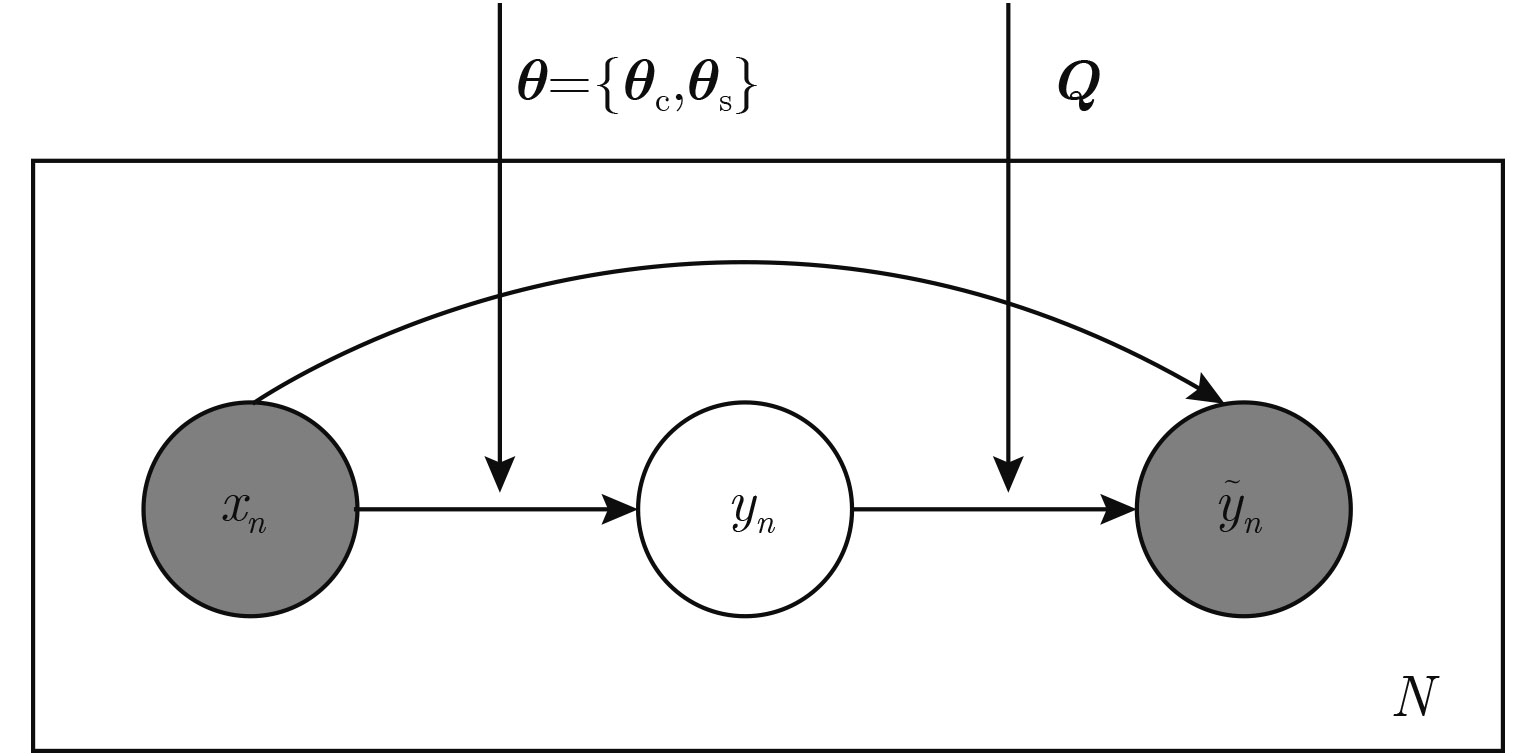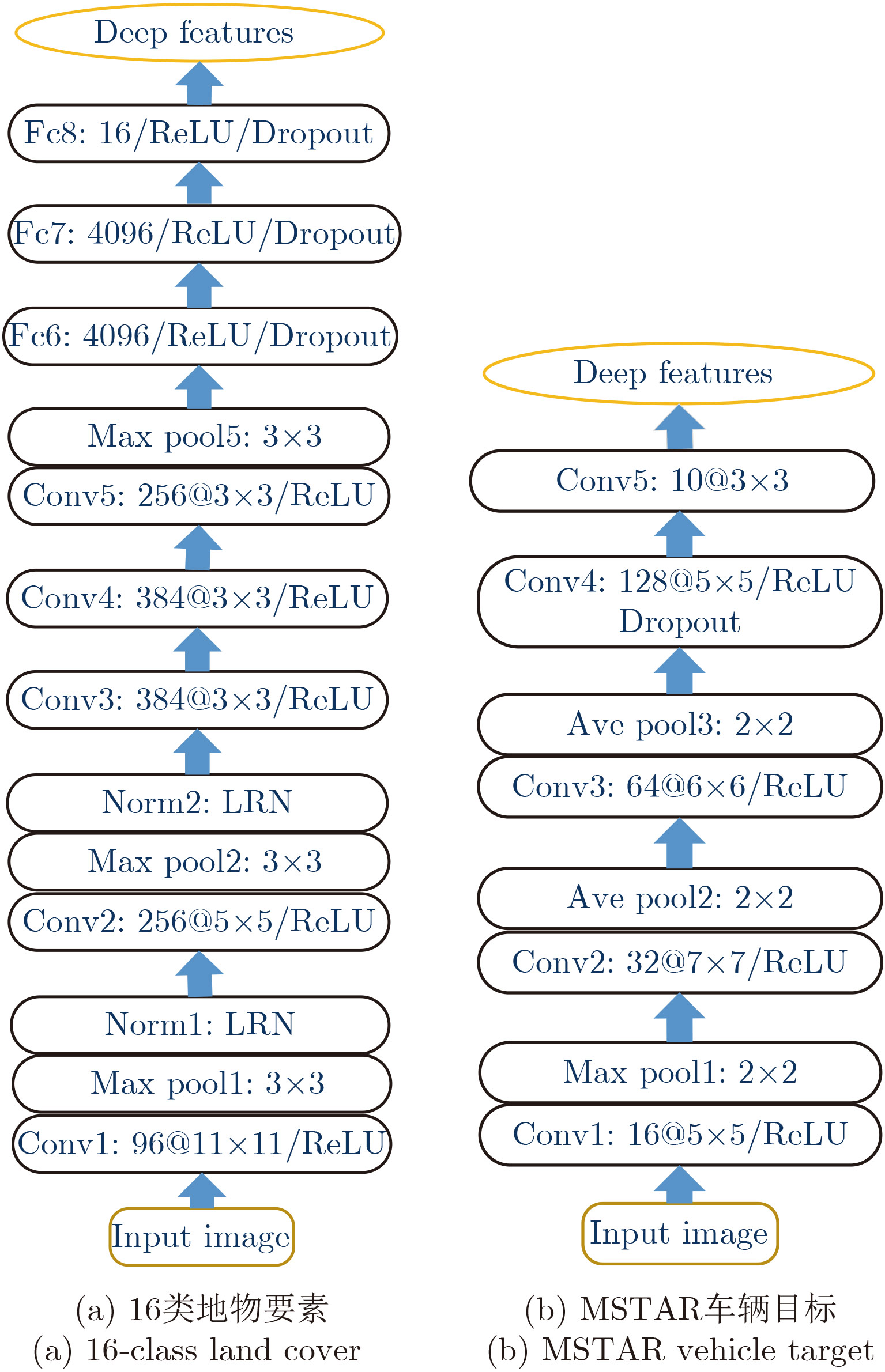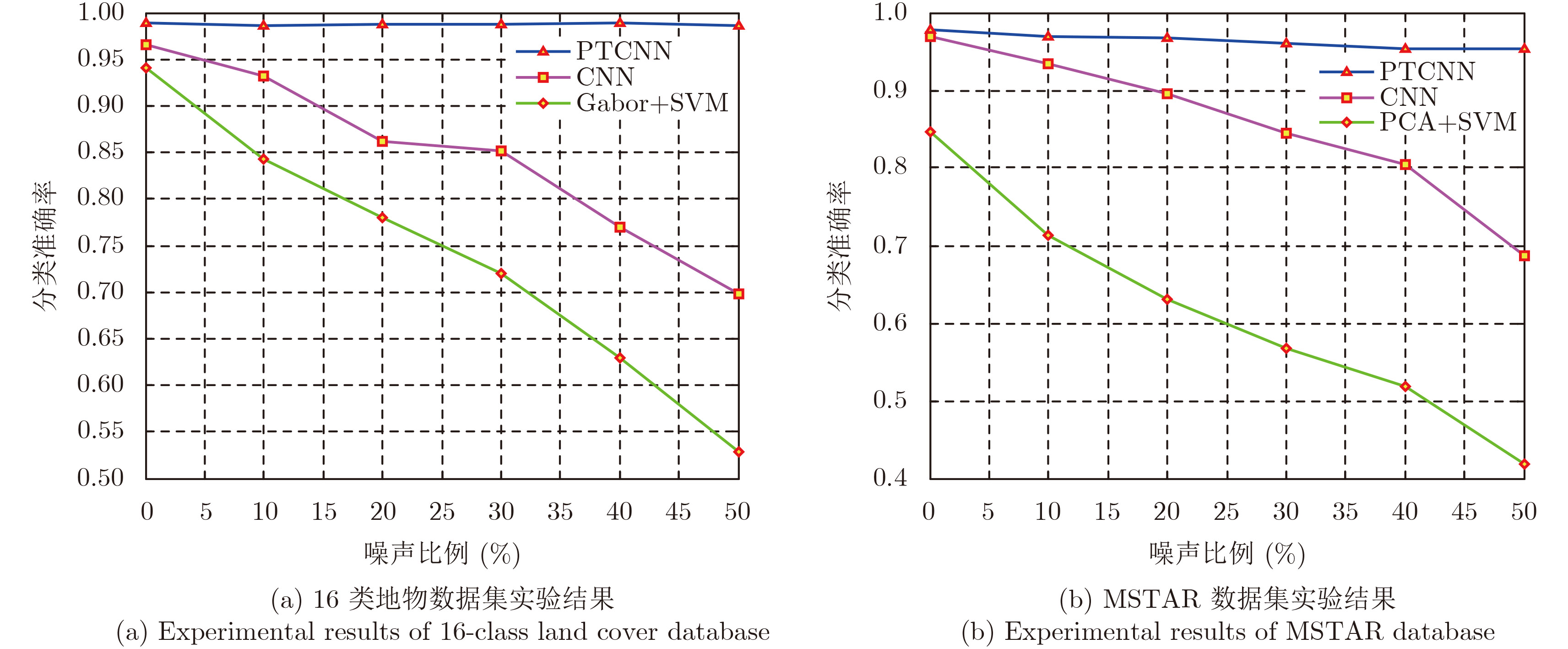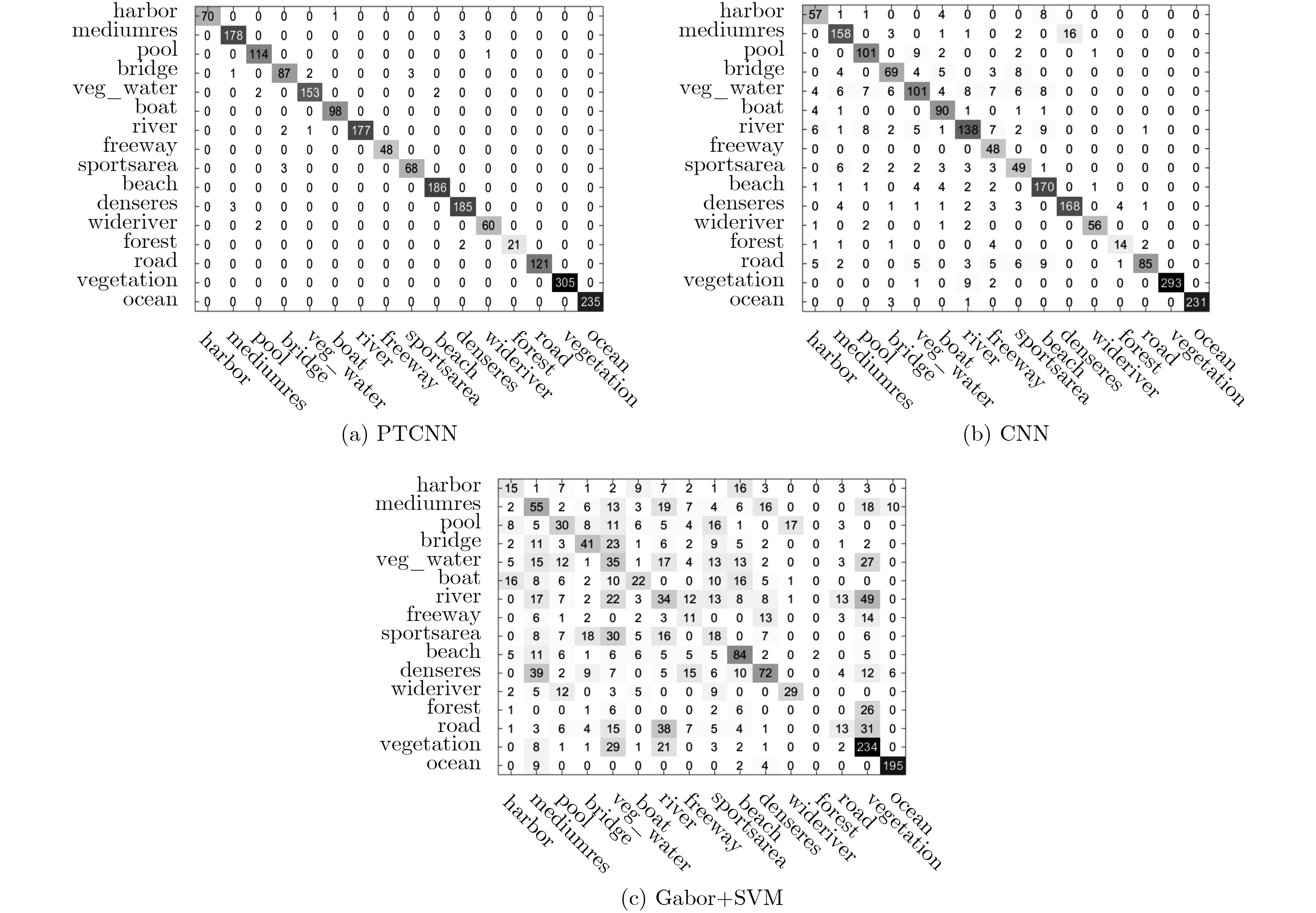| [1] |
Krizhevsky A, Sutskever I, and Hinton G E. Imagenet classification with deep convolutional neural networks[C]. Advances in Neural Information Processing Systems, 2012: 1097–1105.
|
| [2] |
He K, Zhang X, Ren S, et al.. Spatial pyramid pooling in deep convolutional networks for visual recognition[J]. IEEE Transactions on Pattern Analysis and Machine Intelligence, 2015, 37(9): 1904–1916. doi: 10.1109/TPAMI.2015.2389824 |
| [3] |
Chan T H, Jia K, Gao S, et al.. PCANet: A simple deep learning baseline for image classification?[J]. IEEE Transactions on Image Processing, 2015, 24(12): 5017–5032. doi: 10.1109/TIP.2015.2475625 |
| [4] |
Chen X, Xiang S, Liu C L, et al.. Vehicle detection in satellite images by hybrid deep convolutional neural networks[J]. IEEE Geoscience and Remote Sensing Letters, 2014, 11(10): 1797–1801. doi: 10.1109/LGRS.2014.2309695 |
| [5] |
Kalchbrenner N, Grefenstette E, and Blunsom P. A convolutional neural network for modelling sentences[J]. arXiv Preprint arXiv: 1404. 2188, 2014.
|
| [6] |
Kim Y. Convolutional neural networks for sentence classification[J]. arXiv Preprint arXiv: 1408. 5882, 2014.
|
| [7] |
Chen S and Wang H. SAR target recognition based on deep learning[C]. 2014 International Conference on Data Science and Advanced Analytics (DSAA), Shanghai, 2014: 541–547.
|
| [8] |
Wagner S. Combination of convolutional feature extraction and support vector machines for radar ATR[C]. 17th International Conference on Information Fusion (FUSION), Salamanca, 2014: 1–6.
|
| [9] |
|
| [10] |
Li X, Li C, Wang P, et al.. SAR ATR based on dividing CNN into CAE and SNN[C]. 5th Asia-Pacific Conference on Synthetic Aperture Radar (APSAR), Singapore, 2015: 676–679.
|
| [11] |
Ding J, Chen B, Liu H, et al.. Convolutional neural network with data augmentation for SAR target recognition[J]. IEEE Geoscience and Remote Sensing Letters, 2016, 13(3): 364–368.
|
| [12] |
Zhao J, Guo W, Cui S, et al.. Convolutional neural network for SAR image classification at patch level[C]. International Geoscience and Remote Sensing Symposium (IGARSS), Beijing, 2016: 945–948.
|
| [13] |
Chen S, Wang H, Xu F, et al.. Target classification using the deep convolutional networks for SAR images[J]. IEEE Transactions on Geoscience and Remote Sensing, 2016, 54(8): 4806–4817. doi: 10.1109/TGRS.2016.2551720 |
| [14] |
Deng J, Dong W, Socher R, et al.. Imagenet: A large-scale hierarchical image database[C]. IEEE Conference on Computer Vision and Pattern Recognition (CVPR), Miami Beach, Florida, 2009: 248–255.
|
| [15] |
Zhu X and Wu X. Class noise vs. attribute noise: A quantitative study[J]. Artificial Intelligence Review, 2004, 22(3): 177–210. doi: 10.1007/s10462-004-0751-8 |
| [16] |
Chang C C and Lin C J. LIBSVM: A library for support vector machines[J]. ACM Transactions on Intelligent Systems and Technology (TIST), 2011, 2(3): 27.
|
| [17] |
Jia Y, Shelhamer E, Donahue J, et al.. Caffe: Convolutional architecture for fast feature embedding[C]. Proceedings of the 22nd ACM International Conference on Multimedia, Orlando, 2014: 675–678.
|
| [18] |
Hecht-Nielsen R. Theory of the backpropagation neural network[C]. IEEE International Joint Conference on Neural Networks, 1989: 593–605.
|
| [19] |
Bottou L. Stochastic gradient learning in neural networks[J]. Proceedings of Neuro-Nımes, 1991, 91(8).
|
| [20] |
Cui S, Dumitru C O, and Datcu M. Semantic annotation in earth observation based on active learning[J]. International Journal of Image and Data Fusion, 2014, 5(2): 152–174. doi: 10.1080/19479832.2013.858778 |
| [21] |
Popescu A A, Gavat I, and Datcu M. Contextual descriptors for scene classes in very high resolution SAR images[J]. IEEE Geoscience and Remote Sensing Letters, 2012, 9(1): 80–84. doi: 10.1109/LGRS.2011.2160838 |
| [22] |
Singh J, Cui S, Datcu M, et al.. A survey of density estimation for SAR images[C]. 20th European of Signal Processing Conference (EUSIPCO), 2012: 2526–2530.
|
| [23] |
Ross T D, Worrell S W, Velten V J, et al.. Standard SAR ATR evaluation experiments using the MSTAR public release data set[C]. Aerospace/Defense Sensing and Controls. International Society for Optics and Photonics, 1998: 566–573.
|
| [24] |
Wu T, Chen X, Ruang X W, et al.. Study on SAR target recognition based on support vector machine[C]. 2nd Asian-Pacific Conference on Synthetic Aperture Radar, 2009: 856–859.
|




 Submit Manuscript
Submit Manuscript Peer Review
Peer Review Editor Work
Editor Work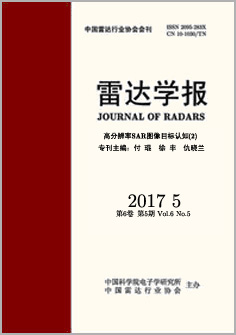





 DownLoad:
DownLoad:
